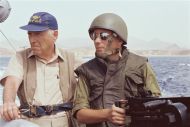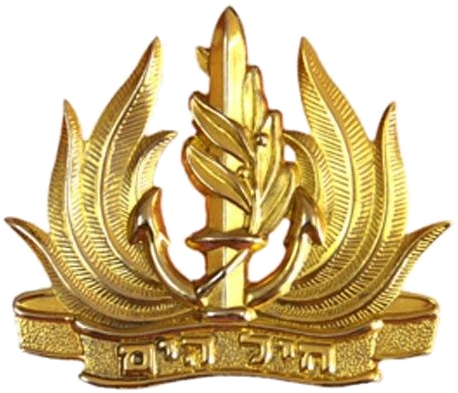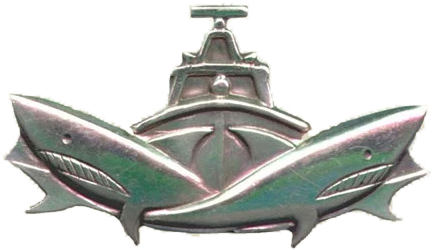Trump cuts Obama’s refugee target in half, takes more Christians than Muslims, Washington Times, , September 26, 2017
 President Barack Obama meets with President-elect Donald Trump in the Oval Office of the White House in Washington on Nov. 10, 2016. (Associated Press)
President Barack Obama meets with President-elect Donald Trump in the Oval Office of the White House in Washington on Nov. 10, 2016. (Associated Press)
President Trump, in just eight months in office, has succeeded in upending U.S. refugee policy, cutting by more than half the 110,000-refugee target that the Obama administration had bequeathed him and dramatically shifting the demographics of who is accepted.
Gone is President Obama’s overwhelming focus on Muslims, and particularly on Syrians fleeing a civil war that his administration facilitated. Under Mr. Trump, the rate of Syrian refugees has been cut by more than 80 percent, and Christians have overtaken Muslims in total refugees resettled.
“It’s impossible to escape the clear message that there’s a new sheriff in town,” said Matthew O’Brien, research director at the Federation for American Immigration Reform, which advocates for stricter refugee controls.
After recommending nearly 35,000 refugee candidates last year, the UNHCR submitted just 3,591 applications from January to July.
Refugee advocates say the U.S. is relinquishing its global leadership and moral standing and have challenged parts of the administration’s policy in the courts, pushing the country to move back toward the goals set by Mr. Obama.
The previous president called for up to 110,000 refugees to be admitted to the U.S. in 2017 and indicated that he wanted Syrians to be a large part of that, with the country on pace for more than 15,000 resettlements this year.
But Mr. Trump, as part of his first “extreme vetting” travel ban executive order, changed all that. He called for cutting the refugee cap from 110,000 to 50,000 and placed a four-month pause on the refugee program and a more lasting ban on Syrians.
Resistance by the courts, immigrant rights activists and Democrats on Capitol Hill dented those plans, but at the end of the fiscal year, it’s clear that the president mostly got his way.
As of Tuesday afternoon, with four days left in the fiscal year, the government had admitted slightly more than 53,000 refugees — less than half of Mr. Obama’s goal but slightly more than Mr. Trump wanted.
Perhaps the bigger impact was within the demographic breakdown, where Muslims dropped from nearly half of refugees under Mr. Obama to slightly more than a third. Christians, meanwhile, went from 43 percent to 53 percent under Mr. Trump.
Syrians, who represented a stunning 15 percent of all refugees under Mr. Obama, dropped to just 8 percent under Mr. Trump.
The State Department didn’t respond to an inquiry from The Times for this article.
Officials at the department are rushing to put together a recommendation for a refugee cap for fiscal year 2018, which begins Sunday.
Under the law, the administration is able to set an overall cap each year. It was set at 80,000 for the end of the Bush administration and beginning of the Obama administration, dropped to 70,000 in 2013, rose to 85,000 in 2016 and then to 110,000 this year.
Mr. Trump proposed cutting this year’s number to 50,000 and came close to fulfilling that, likely ending up just a few thousand over.
Courts had intervened, saying Mr. Trump couldn’t stop the arrival of refugees who had “close” ties to American entities, exempting them from his 50,000 cap.
The president is expected to suggest an even smaller refugee cap for 2018, analysts said. Several reports Tuesday put the figure at 45,000. The administration must conduct official consultations with Congress this week before finalizing the number.
Rep. Randy Hultgren, Illinois Republican and co-chairman of the Tom Lantos Human Rights Commission, said he was disappointed by the low figure.
“I believe we can balance both compassion and security and remain the world’s shining city on a hill,” he said in a statement, adding that he believed the U.S. should “trust our long-standing and rigorous vetting system” to weed out dangers while allowing the pipeline of refugees to flow.
Top Democrats, meanwhile, prodded the White House Wednesday over reports that it nixed a study that would have shown refugees were a net plus for the U.S. economy.
“It appears that the Trump Administration may have rejected these facts in order to present a biased, incomplete, and ultimately false political narrative,” the Democrats wrote in a letter demanding documents.
Advocates say the U.S. puts refugees through stricter screening than any other category of visitor or immigrant to the U.S. and that fears of terrorists using the program to exploit weaknesses are overblown.
But security analysts say countries such as Syria are so broken that the U.S. doesn’t have access to databases or on-the-ground information to vet the stories of would-be refugees.
Mr. O’Brien said his group doesn’t oppose refugees, which he said are part of America’s moral obligation. But he said the government simply can’t vet all cases.
“In those situations in the past, the default position has been to look to the interests of the refugee. I think after Sept. 11 that is an impossible circumstance,” he said. “There are some people where it’s just not going to be possible.”
Mr. O’Brien said Mr. Trump is flexing the powers that the law grants the president, learning that he doesn’t have to work through Congress to make major changes.
Even as some in the U.S. protest Mr. Trump’s changes, the rest of the world is adjusting.
The UNHCR — which screens and recommends to the U.S. potential refugees from some of the world’s hot spots — has drastically slowed the pipeline.
The number of Syrians submitted to the U.S. for resettlement screening is down more than 80 percent so far this year. Similar drops were recorded for Somalia, Iran and Afghanistan. Iraq had an even bigger drop in submission rate by the UNHCR.






Recent Comments